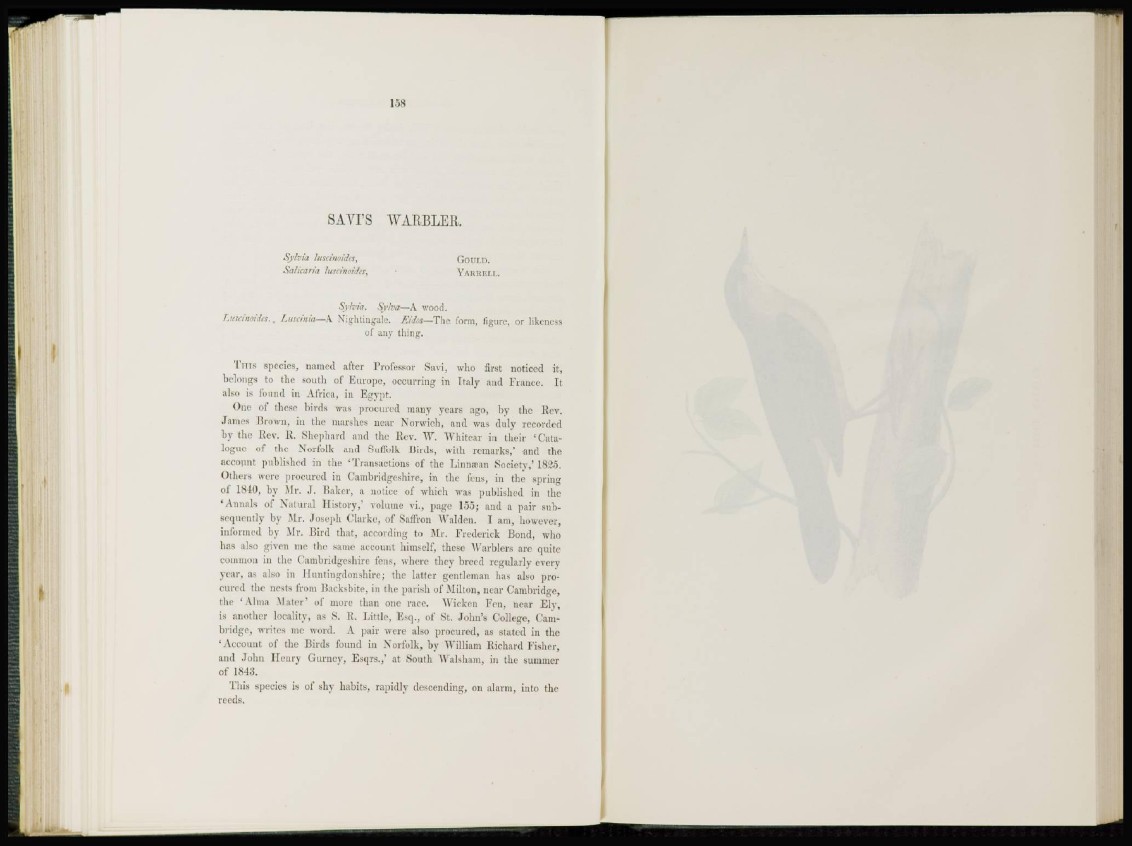
1S8
SAVI'S WARBLER.
Sylvia luscinoidei, GOULD.
Salicaria luscinnides, • YARREM,.
Sylvia. Sylva—A wood.
Luscimoidet.. Luscinia—S. Nightingale. Eidos—The form, figure, or likeness
of any thing.
TTITS species, named after Professor Savi, who first noticed it,
belongs to the south of Europe, occurring in Italy and France. It
abn is found in Africa, in Egypt.
One of these birds was procured many years ago, by the Rev.
James Brown, in the marshes near Norwich, and was duly recorded
by the Rev. R. Shcphard and the Rev. W. Whitoar in their 'Catalogue
of the Norfolk and Suffolk Birds, with remarks,' and the
account published in the 'Transactions of the Linnsean Society,* 1825.
Others were procured in Cambridgeshire, in the feus, in the spring
of 1840, by Mr. J. Baker, a notice of which was published in the
'Annals of Natural History,' volume vi., page 155; and a pair subsequently
by Mr. Joseph Clarke, of Saffron Walden. I am, however,
informed by Mr, Bird that, according to Mr. Frederick Bond, who
has also given me the same account himself, theBe Warblers are quite
common in the Cambridgeshire fens, where they breed regularly every
year, as also in Huntingdonshire; the latter gentleman has also procured
the nests from Backsbite, in the parish of Milton, near Cambridge,
the 'Alma Mater' of more than one race. Wicken Fen, near Ely,
is another locality, as S. K. Little, Esq.. of St. John's College, Cambridge,
writes me word. A pair were also procured, as stated in the
'Account of the Birds found in Norfolk, by William Richard Fisher,
and John Henry Gurney, Esqrs.,' at South Walsham, in the summer
of 1843.
This species is of shy habits, rapidly descending, on alarm, into the
reeds.